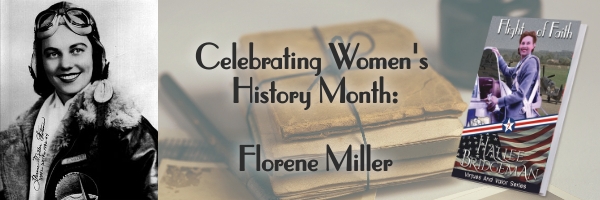
While researching the incredible women during World War II to write this series of books, I often experienced the difficult task of choosing between this or that remarkable story of one incredible woman or another equally incredible account to help inspire my heroines. However, in the case of my fictional character, young Helen Mulberry (later Green), my inspiration was very clear.
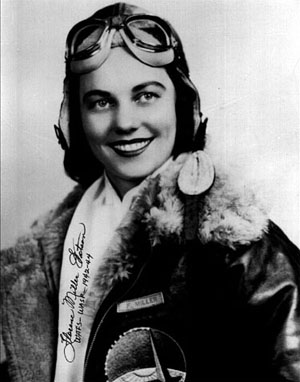
The heroic then twenty-two-year-old woman on the original cover of this book photographed at Love Field, Texas, in 1943 is the incredible Florene Miller (later Watson). Florene Miller was born on December 7, 1920. She turned twenty-one on the day the Japanese bombed Pearl Harbor. When writing my Virtues’ stories, I very purposefully shied away from too much mention of specific historical events surrounding the war. I had no desire to tred on true history and sought only to create a world with my characters doing their things in the fictional towns I crafted. However, I did have a very significant scene in this book that pertained to the bombing of Pearl Harbor. In a way, that was my little nod to Florene.
Like my fictional Helen, the real-life Florene was a Texan, born in San Angelo. At 8-years-old, she took her first airplane ride in a Word War I era Barnstormer’s open-cockpit biplane and fell in love with flying. While in her sophomore year at Baylor University, her father purchased the family a Luscombe airplane. Much like my fictional character Ruth Aubertin in Grace’s Ground War, the real-life Florene’s father believed his country would soon go to war with Germany, and he wanted his children to be trained aviators in the war effort.
The Luscombe enabled Florene to spend numerous hours flying and studying aircraft engines, navigation, meteorology, and flight rules and regulations. At nineteen, she graduated from flight school. In a few short months, Florene became a commercial pilot, obtained flight and ground school instructor ratings. Before her twenty-first birthday, she would be teaching men (including her future husband, Chris Watson) how to fly in the War Training Program in Odessa, Texas.
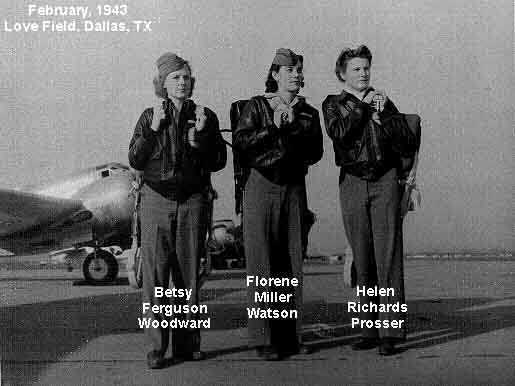
Figure 83: WAFS members-Betsy Ferguson, Florine Miller, and Helen Richards at Love Field, Dallas, Texas, Feb. 1943
In 1939, after Germany invaded Poland, female pilot Jacqueline Cochran wrote to the first lady, Eleanor Roosevelt, regarding using women pilots in the armed forces. Shortly after that, female pilot Nancy Harkness Love wrote a similar letter to the people in charge of the Ferrying Division of the Armed Air Forces. Early in the European war, the United States wasn’t quite ready to utilize women as pilots for military airplanes. However, by September 1942—9 months after the Pearl Harbor attack—they started shifting that idea.
An increased demand brought on by male pilots heading out of the country to fight in the war left a shortage of experienced pilots in the United States. The leaders of the Air Transport Command contacted Nancy Harkness Love and hired her to recruit qualified women pilots.
As I mentioned, December 7, 1941, the day the Japanese attacked Pearl Harbor, was Florene’s twenty-first birthday. After the Pearl Harbor attack, both Florene and her brother had volunteered for the Army Air Corps. At that time, to qualify as Army pilots, men were required to have 250 hours of flying time, a commercial license, and a horsepower rating. On the other hand, women were required to have a minimum of 500 hours.
A call was put out for 50 women who had logged over 500 hours of flying to help ferry aircraft, cargo, and troops. Only twenty-five women in the entire country met the criteria, though the women who qualified at the time-averaged 1,100 hours each.
Florene was one of those twenty-five women who qualified, and she became a member of the Women’s Auxiliary Ferrying Squadron (WAFS) and, a very short time later, its first Commanding Officer. These women flew 8 months delivering airplanes nationally before any of the 1,074 other women pilots graduated from Jackie Cochran’s flight training school.
Then, on September 14, 1942, General Henry “Hap” Arnold, Commanding General of the Army Air Forces, approved a program that would train qualified female pilots to serve as ferry pilots. The program was placed under the direction of Jacqueline Cochran and named the Army Air Forces Women’s Flying Training Detachment (WFTD).
On August 5, 1943, the WAFS and the WFTD merged and became re-designated as the Women Airforce Service Pilots (WASPs). Jacqueline Cochran was appointed the Director, and Nancy Harkness Love was named WASP Executive with the ATC Ferrying Division. Florene, the former Commanding Officer of the WAFS, became the first Commanding Officer of the WASPs stationed at Love Field, Dallas, Texas.
Although the WASP held officer status, they were classified as civilians, ineligible for government life insurance, military funerals, burial expenses, and other G.I. benefits. More than three decades elapsed before the first honorable discharge was awarded to a WASP.
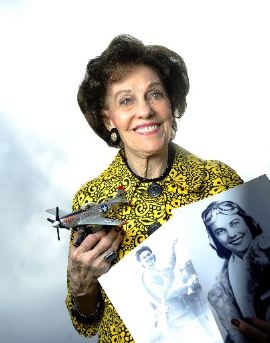
By the end of the war, Florene had flown every type of airplane that the Air Corps used including Aeronea, Waco, Taylorcraft, Piper Cub, BT-13, PT-17, PT-19, AT-6, AT-9, AT-10, AT-11, AT-17, A-20, A-26, P-38, P-39, P-40, P-47, P-51, SB2C, C-47(DC-3), B-17, B-24, B-25, Lockheed P-38F Lightning and her favorite, the North American P-51D Mustang. In 1944, Florene was chosen to be a test pilot in a secret program to develop radar equipment for airplanes.
After the war, Florene and Chris Watson married, and she earned her BA then MBA. Her husband worked for Phillips Petroleum, and she taught college for thirty years.
The image used on the original cover of this book was also selected by the US Department of Defense for its official WASP website:
www.defense.gov/home/features/2010/0310_wasp/
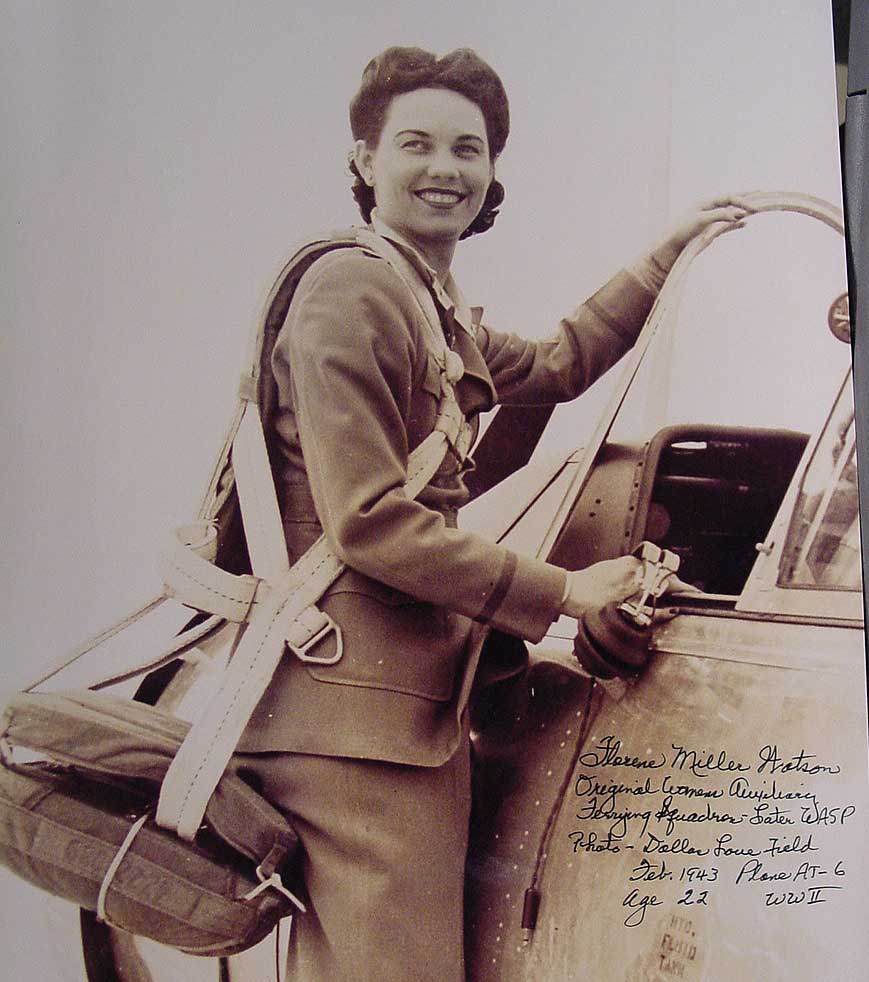
Among her many honors and distinctions are:
· Membership in the Distinguished Flying Corps in the Kritser Aviation and Space Museum, Amarillo, TX
· Induction into the Ninety-Nines International Forest of Friendship, Atichison, Kansas (Amelia Earhart’s home) for exceptional contributions to aviation
· First woman inductee into the Panhandle Veterans Hall of Fame
· Distinguished Veteran honoree at the Air Force Military Ball in Dallas, TX
· National Medal of Honor from The Daughters of the American Revolution
· Designation as an “Eagle” 4 separate times at the Air Force’s annual Gathering of Eagles celebration
· National Air Force Association’s Lifetime Achievement Award
· Induction into the Texas Aviation Hall of Fame
· The renaming of the airport in her hometown of Big Lake, TX the Florene Miller Watson Airport
· The Congressional Gold Medal, the highest award the United States Congress can present to a civilian
Florene had extensive Bible training and spent ten years as the National Chaplain of the WASP. She was active in her church and community affairs in Borger, Texas, near Amarillo.
I’m sad to say Florene died on February 4, 2014, at the age of ninety-three, just thirteen months before the first edition of this book was published. I’ve read numerous articles and interviews about this incredible woman. In everything I’ve read about her, this stood out to me:
“During the years, I have been asked to give many, many WAFS- WASP WWII presentations … been inducted into several prestigious ‘Hall of Fame’ type honors, and been featured in newspapers, books and magazine articles—but the bottom line for me is—’What does my Lord think of me!’”
—Florene Miller Watson
But those who wait on the Lord
Shall renew their strength;
They shall mount up with wings like eagles,
They shall run and not be weary,
They shall walk and not faint.
Isaiah 40:31 (NKJV)
Read about Helen Mulberry, who was inspired by Florene Miller, in Flight of Faith, part seven of the Virtues and Valor Series.





















